|
For the next few weeks, I’ll be reviewing chapters from Frank Joseph’s new alternative history anthology, Lost Worlds of Ancient America (New Page Books, 2012). This is my review of Chapters 8 through 13. Chapter 8 begins with a refreshing change of pace. Author Archie Eschborn, for whom no Frank Joseph gives no biographical information, tells us that the alternative theory that Florida was the Garden of Eden is not true. How big of him! In looking up Eschborn, I see that he was the former VP of sales for Revcor, Inc. and died in 2008 of pancreatic cancer. According to his obituary, he advocated for the presence of ancient stone ruins at the bottom of Rock Lake in Wisconsin. In Chapter 8, Eschborn claims that large stones found in Florida with holes in them were mooring stones for “light skinned foreigners” from Europe who parked there to receive shipments of copper from the Great Lakes, more than 1,000 miles to the north. And that is it. No evidence is given, just the assertion that since racist eighteenth and nineteenth century authors believed in a lost white race, it must be fact. The stones are not discussed or evaluated except on the principle of “looks like”—they look like they might be Bronze Age mooring stones, so they must be, regardless of context or history. * * * In Chapter 9, Patrick C. Chouinard discusses the so-called “Ice Maiden,” an Incan human sacrifice preserved by the cold atop a mountain in the Andes. The only claim made in the article is that the Ice Maiden and some other Inca mummies “evidenced traces of Caucasian features,” followed by some twaddle about white people in ancient America serving as a theocratic aristocracy lording it over the dark-skinned peasants. He supports this with a “quotation” from Pedro Pizarro about the elite Inca being “hardly distinguishable from fair, white men” sourced to William Hickling Prescott’s History of the Conquest of Peru, but the quotation does not appear in any copy of the work that I consulted, or in Pizarro’s original text. It appears only in alternative texts, though I cannot determine which alternative author first introduced this apparently fake quotation. The oldest source I found was a Mormon pamphlet which used the fake quotation in support of the Book of Mormon’s 2 Nephi 5:21, about the lost race being “white, and exceedingly fair,” with the pamphlet’s source in turn being Donald E. McIndoo’s 1994 A Book of Mormon Companion. This may well be the origin of the apparently fake text, seeking an exact parallel to a weird phrase from the Book of Mormon. [Update: I was wrong. The quotation appears in volume 2 of Pizarro's work, but Pizarro considered all Peruvians of interior Peru to be "white" something racial theorists of today would not agree with. It is the result of founder effect and natural variations in skin color. See here for how alternative authors distorted Pizarro's quotation beyond recognition.] * * * Speaking of Mormons, the extremist Mormon Wayne May is back in Chapter 10 with a claim, from Gunnar Thompson, that the Egyptians sailed to America to get corn (maize). His evidence is an image of vegetables that look nothing like corn from an Egyptian painting. The image shown clearly depicts a rough, root-like vegetable with leaves growing up from the root. A corn ear, by contrast, has the cob covered in leaves which point in the same direction as the ear. Presumably, May and Thompson must think that the ears are shown with the leaves pulled back, as in being shucked, but if that’s the case, the corn is drawn upside-down, with the artist spending a great deal of effort to pain the supposedly shucked leaves while ignoring the edible part. This is another case of seeing in a picture what you bring to it. Think about this: Corn kernels from the past several thousand years survive in abundance in America, but despite these paintings not a single dropped cob or lost kernel has ever turned up in the Old World. Were the Egyptians that neat? * * * Lee Pennington’s Chapter 11 repeats unsupported claims that any of the forged artifacts from Burrows Cave are real, and there is no reason to entertain the notion that the crudely drawn, stylistically modern “map stone” is anything but another in the cave’s endless parade of fakes. * * * In Chapter 12, Carles F. Herberger, a professor of English and Nasson College, discusses something called the “Aagard lamp,” about which (of course) no other information is available outside other Ancient American articles. Not enough information (or even a photograph) is provided to evaluate the claim that the small object found by Eugene Aargard in Utah in 1980 is an Old World alabaster lamp. Since the piece was supposedly discovered in Utah, the confused Maya-Minoan hybrid description Herberger does provide suggests another Mormon hoax. * * * Chapter 13, again by Frank Joseph, concludes the book’s first section about “physical proof.” I suppose this means the rest of book will include even more unsupported speculation. In this chapter, Joseph introduces us to a metal pendant bearing the image of “Prince of Lilies,” a Minoan fresco reconstructed by Arthur Evans from three possibly unrelated Minoan fragments at Knossos in 1901. It would be rather a coincidence for a genuinely ancient pendant to have slavishly copied a fresco that quite possibly never existed in its current form prior to 1901. Only the crown, torso, and left leg are original. The other segments, including those depicted point-for-point in the metal pendant (such as the exact braiding of the hair), were created by Evans’ team in 1901 to fill the gaps between the fragments dug up from Knossos. I know of no other instance in which a fresco is exactly duplicated in a pendant from Minoan times. Further, Minoan art would never have depicted only half a person (there are no legs on the pendant). Since there is no sign of breakage on the pendant, the image appears to be a modern one, perhaps a tourist trinket from pre-war Crete. Joseph then tells us that the Minoans must have come to America because the “Arizona Native Americans” (which ones he never says) had a spiral figure that was a maze. This must be the Minoan labyrinth because no one in America could draw a spiral without having learned about it from white people. In this, Joseph is drawing on Harold Sellers Colton’s 1917 Science article linking the American and Minoan mazes. He claims that Colton supports the idea of diffusion, but he leaves out the fact that Colton well-knew and carefully explained that the symbol is unknown in America prior to the eighteenth century, was probably introduced by the Spanish, and that the particular maze identified in the literature was not drawn by an Native American at all but rather was a European symbol shown to a Native American as an illustration of the story being told—about a game in which a gopher dug a complicated tunnel. (Read it all here You’ll see that Joseph misrepresents Colton completely.) Joseph wants us to identify the gopher, Tcuhuki, with Theseus by not telling us he is a gopher. And so we come to the end of Part I without a single unambiguous piece of evidence to clearly prove European voyages to the pre-Columbian Americas. This is the best he has?
Comments are closed.
|
AuthorI am an author and researcher focusing on pop culture, science, and history. Bylines: New Republic, Esquire, Slate, etc. There's more about me in the About Jason tab. Newsletters
Enter your email below to subscribe to my newsletter for updates on my latest projects, blog posts, and activities, and subscribe to Culture & Curiosities, my Substack newsletter.
Categories
All
Terms & ConditionsPlease read all applicable terms and conditions before posting a comment on this blog. Posting a comment constitutes your agreement to abide by the terms and conditions linked herein.
Archives
July 2024
|
- Home
- Blog
- Books
-
Articles
-
Newsletter
>
- Television Reviews >
- Book Reviews
- Galleries >
- Videos
-
Collection: Ancient Alien Fraud
>
- Chariots of the Gods at 50
- Secret History of Ancient Astronauts
- Of Atlantis and Aliens
- Aliens and Ancient Texts
- Profiles in Ancient Astronautics >
- Blunders in the Sky
- The Case of the False Quotes
- Alternative Authors' Quote Fraud
- David Childress & the Aliens
- Faking Ancient Art in Uzbekistan
- Intimations of Persecution
- Zecharia Sitchin's World
- Jesus' Alien Ancestors?
- Extraterrestrial Evolution?
- Collection: Skeptic Magazine >
- Collection: Ancient History >
- Collection: The Lovecraft Legacy >
- Collection: UFOs >
- Scholomance: The Devil's School
- Prehistory of Chupacabra
- The Templars, the Holy Grail, & Henry Sinclair
- Magicians of the Gods Review
- The Curse of the Pharaohs
- The Antediluvian Pyramid Myth
- Whitewashing American Prehistory
- James Dean's Cursed Porsche
-
Newsletter
>
-
The Library
-
Ancient Mysteries
>
-
Ancient Texts
>
- Mesopotamian Texts >
-
Egyptian Texts
>
- The Shipwrecked Sailor
- Dream Stela of Thutmose IV
- The Papyrus of Ani
- Classical Accounts of the Pyramids
- Inventory Stela
- Manetho
- Eratosthenes' King List
- The Story of Setna
- Leon of Pella
- Diodorus on Egyptian History
- On Isis and Osiris
- Famine Stela
- Old Egyptian Chronicle
- The Book of Sothis
- Horapollo
- Al-Maqrizi's King List
- Teshub and the Dragon
- Hermetica >
- Hesiod's Theogony
- Periplus of Hanno
- Ctesias' Indica
- Sanchuniathon
- Sima Qian
- Syncellus's Enoch Fragments
- The Book of Enoch
- Slavonic Enoch
- Sepher Yetzirah
- Tacitus' Germania
- De Dea Syria
- Aelian's Various Histories
- Julius Africanus' Chronography
- Eusebius' Chronicle
- Chinese Accounts of Rome
- Ancient Chinese Automaton
- The Orphic Argonautica
- Fragments of Panodorus
- Annianus on the Watchers
- The Watchers and Antediluvian Wisdom
-
Medieval Texts
>
- Medieval Legends of Ancient Egypt >
- The Hunt for Noah's Ark
- Isidore of Seville
- Book of Liang: Fusang
- Agobard on Magonia
- Book of Thousands
- Voyage of Saint Brendan
- Power of Art and of Nature
- Travels of Sir John Mandeville
- Yazidi Revelation and Black Book
- Al-Biruni on the Great Flood
- Voyage of the Zeno Brothers
- The Kensington Runestone (Hoax)
- Islamic Discovery of America
- The Aztec Creation Myth
-
Lost Civilizations
>
-
Atlantis
>
- Plato's Atlantis Dialogues >
- Fragments on Atlantis
- Panchaea: The Other Atlantis
- Eumalos on Atlantis (Hoax)
- Gómara on Atlantis
- Sardinia and Atlantis
- Santorini and Atlantis
- The Mound Builders and Atlantis
- Donnelly's Atlantis
- Atlantis in Morocco
- Atlantis and the Sea Peoples
- W. Scott-Elliot >
- The Lost Atlantis
- Atlantis in Africa
- How I Found Atlantis (Hoax)
- Termier on Atlantis
- The Critias and Minoan Crete
- Rebuttal to Termier
- Further Responses to Termier
- Flinders Petrie on Atlantis
- Amazing New Light (Hoax)
- Lost Cities >
- OOPARTs
- Oronteus Finaeus Antarctica Map
- Caucasians in Panama
- Jefferson's Excavation
- Fictitious Discoveries in America
- Against Diffusionism
- Tunnels Under Peru
- The Parahyba Inscription (Hoax)
- Mound Builders
- Gunung Padang
- Tales of Enchanted Islands
- The 1907 Ancient World Map Hoax
- The 1909 Grand Canyon Hoax
- The Interglacial Period
- Solving Oak Island
-
Atlantis
>
- Religious Conspiracies >
-
Giants in the Earth
>
-
Fossil Origins of Myths
>
- Fossil Teeth and Bones of Elephants
- Fossil Elephants
- Fossil Bones of Teutobochus
- Fossil Mammoths and Giants
- Giants' Bones Dug Out of the Earth
- Fossils and the Supernatural
- Fossils, Myth, and Pseudo-History
- Man During the Stone Age
- Fossil Bones and Giants
- Mastodon, Mammoth, and Man
- American Elephant Myths
- The Mammoth and the Flood
- Fossils and Myth
- Fossil Origin of the Cyclops
- History of Paleontology
- Fragments on Giants
- Manichaean Book of Giants
- Geoffrey on British Giants
- Alfonso X's Hermetic History of Giants
- Boccaccio and the Fossil 'Giant'
- Book of Howth
- Purchas His Pilgrimage
- Edmond Temple's 1827 Giant Investigation
- The Giants of Sardinia
- Giants and the Sons of God
- The Magnetism of Evil
- Tertiary Giants
- Smithsonian Giant Reports
- Early American Giants
- The Giant of Coahuila
- Jewish Encyclopedia on Giants
- Index of Giants
- Newspaper Accounts of Giants
- Lanier's A Book of Giants
-
Fossil Origins of Myths
>
-
Science and History
>
- Halley on Noah's Comet
- The Newport Tower
- Iron: The Stone from Heaven
- Ararat and the Ark
- Pyramid Facts and Fancies
- Argonauts before Homer
- The Deluge
- Crown Prince Rudolf on the Pyramids
- Old Mythology in New Apparel
- Blavatsky on Dinosaurs
- Teddy Roosevelt on Bigfoot
- Devil Worship in France
- Maspero's Review of Akhbar al-zaman
- The Holy Grail as Lucifer's Crown Jewel
- The Mutinous Sea
- The Rock Wall of Rockwall
- Fabulous Zoology
- The Origins of Talos
- Mexican Mythology
- Chinese Pyramids
- Maqrizi's Names of the Pharaohs
-
Extreme History
>
- Roman Empire Hoax
- American Antiquities
- American Cataclysms
- England, the Remnant of Judah
- Historical Chronology of the Mexicans
- Maspero on the Predynastic Sphinx
- Vestiges of the Mayas
- Ragnarok: The Age of Fire and Gravel
- Origins of the Egyptian People
- The Secret Doctrine >
- Phoenicians in America
- The Electric Ark
- Traces of European Influence
- Prince Henry Sinclair
- Pyramid Prophecies
- Templars of Ancient Mexico
- Chronology and the "Riddle of the Sphinx"
- The Faith of Ancient Egypt
- Remarkable Discoveries Within the Sphinx (Hoax)
- Spirit of the Hour in Archaeology
- Book of the Damned
- Great Pyramid As Noah's Ark
- Richard Shaver's Proofs
-
Ancient Texts
>
-
Alien Encounters
>
-
US Government Ancient Astronaut Files
>
- Fortean Society and Columbus
- Inquiry into Shaver and Palmer
- The Skyfort Document
- Whirling Wheels
- Denver Ancient Astronaut Lecture
- Soviet Search for Lemuria
- Visitors from Outer Space
- Unidentified Flying Objects (Abstract)
- "Flying Saucers"? They're a Myth
- UFO Hypothesis Survival Questions
- Air Force Academy UFO Textbook
- The Condon Report on Ancient Astronauts
- Atlantis Discovery Telegrams
- Ancient Astronaut Society Telegram
- Noah's Ark Cables
- The Von Daniken Letter
- CIA Psychic Probe of Ancient Mars
- Scott Wolter Lawsuit
- UFOs in Ancient China
- CIA Report on Noah's Ark
- CIA Noah's Ark Memos
- Congressional Ancient Aliens Testimony
- Ancient Astronaut and Nibiru Email
- Congressional Ancient Mars Hearing
- House UFO Hearing
- Ancient Extraterrestrials >
- A Message from Mars
- Saucer Mystery Solved?
- Orville Wright on UFOs
- Interdimensional Flying Saucers
- Poltergeist UFOs
- Flying Saucers Are Real
- Report on UFOs
-
US Government Ancient Astronaut Files
>
-
The Supernatural
>
- The Devils of Loudun
- Sublime and Beautiful
- Voltaire on Vampires
- Demonology and Witchcraft
- Thaumaturgia
- Bulgarian Vampires
- Religion and Evolution
- Transylvanian Superstitions
- Defining a Zombie
- Dread of the Supernatural
- Vampires
- Werewolves and Vampires and Ghouls
- Science and Fairy Stories
- The Cursed Car
-
Classic Fiction
>
- Lucian's True History
- Some Words with a Mummy
- The Coming Race
- King Solomon's Mines
- An Inhabitant of Carcosa
- The Xipéhuz
- Lot No. 249
- The Novel of the Black Seal
- The Island of Doctor Moreau
- Pharaoh's Curse
- Edison's Conquest of Mars
- The Lost Continent
- Count Magnus
- The Mysterious Stranger
- The Wendigo
- Sredni Vashtar
- The Lost World
- The Red One
- H. P. Lovecraft >
- The Skeptical Poltergeist
- The Corpse on the Grating
- The Second Satellite
- Queen of the Black Coast
- A Martian Odyssey
- Classic Genre Movies
-
Miscellaneous Documents
>
- The Balloon-Hoax
- A Problem in Greek Ethics
- The Migration of Symbols
- The Gospel of Intensity
- De Profundis
- The Life and Death of Crown Prince Rudolf
- The Bathtub Hoax
- Crown Prince Rudolf's Letters
- Position of Viking Women
- Employment of Homosexuals
- James Dean's Scrapbook
- James Dean's Love Letters
- The Amazing James Dean Hoax!
- James Dean, The Human Ashtray
- Free Classic Pseudohistory eBooks
-
Ancient Mysteries
>
- About Jason
- Search
© 2010-2024 Jason Colavito. All rights reserved.

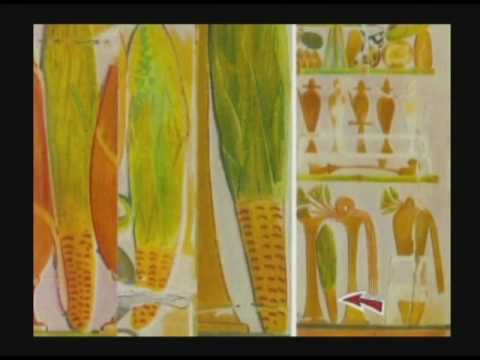
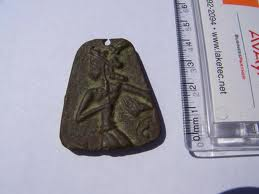
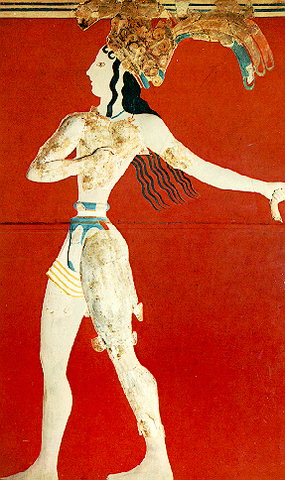
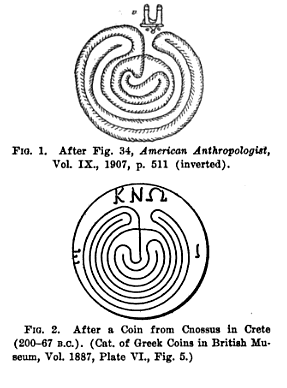


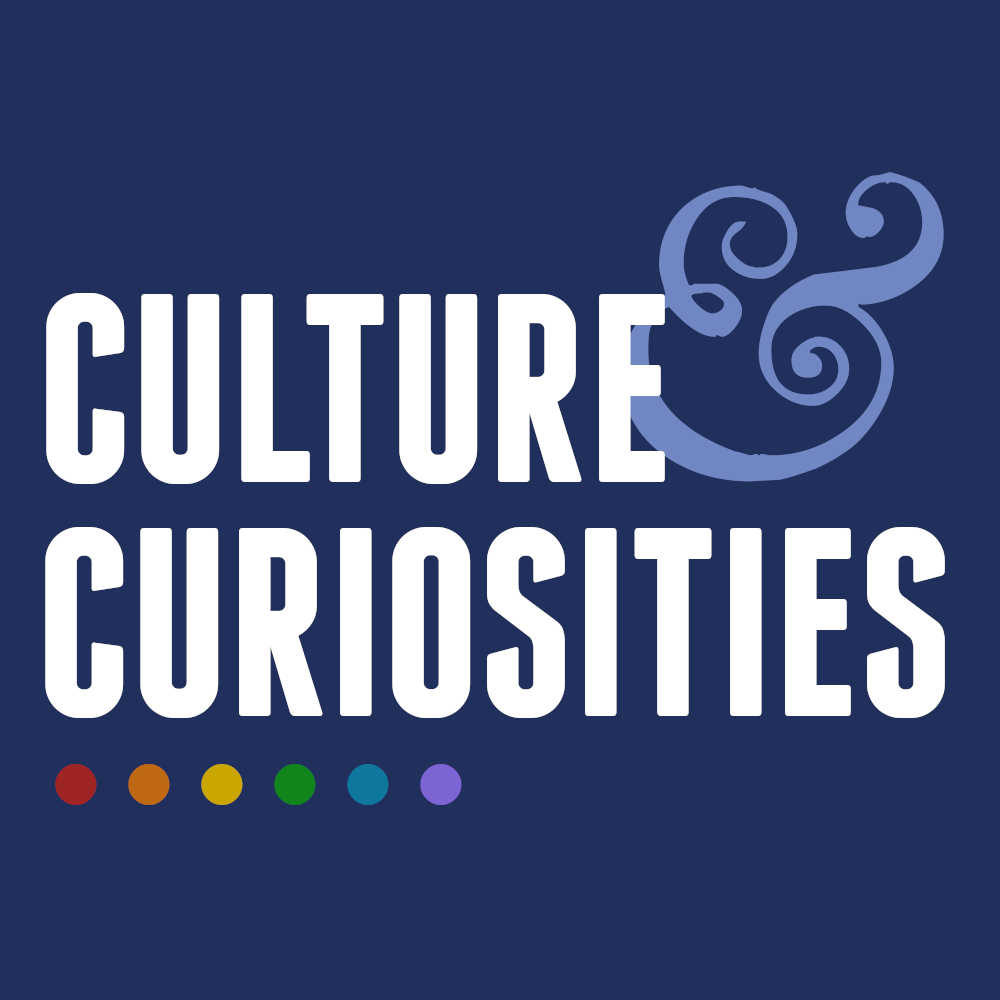
 RSS Feed
RSS Feed
